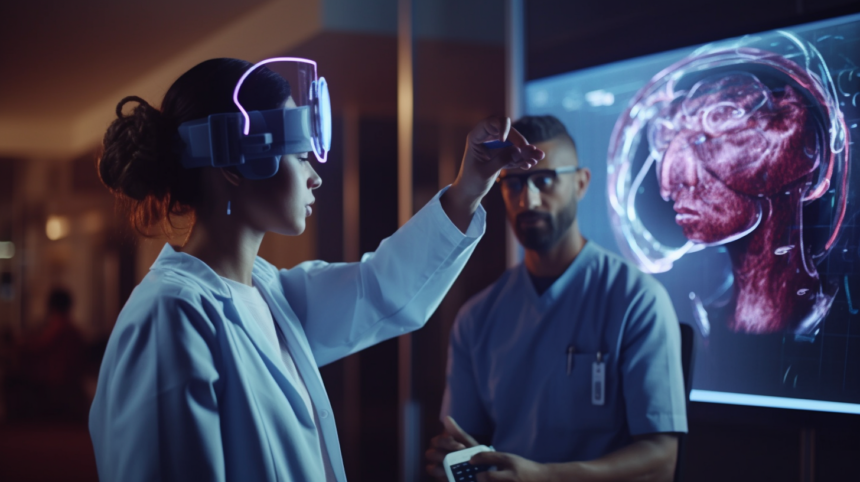Augmented reality (AR) is being increasingly used by healthcare providers to improve patient outcomes and enhance medical training. By establishing digital trust, healthcare providers can enhance the full potential of AR which further improves data security, privacy and system reliability. AR is an interactive technology that overlays digital information onto the physical environment. In a healthcare setting, AR can provide professionals with real-time data and visual aids to support their work.
So what exactly are the benefits of the AR takeover?
The use of AR not only provides benefits to patients but also to professionals using the technology. It can be used to guide surgeons through procedures as it has the ability to provide real-time information about the patient’s anatomy and the location of surgical tools. Alongside this, AR can provide comfort to patients as it can be used to educate patients about their procedures by allowing visualisation.
Additionally, the visualisation aspect of AR can be used to interact with 3D models of anatomy and medical procedures. This can be utilised to help medical students and professionals to better understand complex medical scenarios and develop their critical thinking. Creating AR simulations also provides a safe, controlled environment for trainees to practice procedures. This drastically improves patient safety and reduces the risk of medical errors. Alder Hey Children’s Hospital in Liverpool is one of many to use AR to provide better healthcare. Using Microsoft’s HoloLens 2 smart glasses, “I was in the operating theatre performing a complex repair on a little heart, no bigger than the size of a strawberry, ” said Rafael Guerrero, heart unit director and chief of congenital cardiac surgery.
Another potential application of AR in healthcare is telemedicine. Creating virtual consultations between patients and professionals, AR can allow providers to visualize and assess patients’ conditions remotely. It can also be used to monitor vital signs, providing valuable insight into patients’ health.
With so many benefits of AR, it could be hard to imagine any pitfalls it may potentially possess, right?
Data Privacy and Security
In healthcare, data privacy and security are a big deal, so the use of AR causes speculation on whether it will jeopardize this. Healthcare providers must comply with strict data privacy regulations, such as the Health Insurance Portability and Accountability Act (HIPAA) in the United States. In the European Union, providers follow the General Data Protection Regulation (GDPR).
However, AR can actually strengthen data privacy and security because it can be used to anonymize patient data by removing any identifying information from medical images. This can help protect confidentiality whilst still providing valuable insight. Furthermore, AR can be used to display patient data in a secure and encrypted format, reducing the risk of data breaches or unauthorized access.
What are the potential risks of using AR?
A primary risk of using AR in healthcare surrounds data breaches. If healthcare providers were to utilise AR in their practice, they must ensure the applications are secure and comply with data privacy regulations, such as HIPPA and GDPR.
There is also concern over potential technical errors or glitches. Due to AR technology being relatively new, it may not always work as intended. Such glitches pose a risk of inaccuracies in medical data or visual aids, which could potentially harm patient outcomes.
In addition, the challenge of integrating AR into existing healthcare workflows suggests a significant amount of training and resources will be required to implement its use effectively. Therefore, providers should carefully consider the costs and benefits of using AR.
Regardless of the potential risks associated with using AR in healthcare, it appears that the large benefits of such technologies encourage its adoption. Do you think the use of AR medically is more of a positive than a negative?











